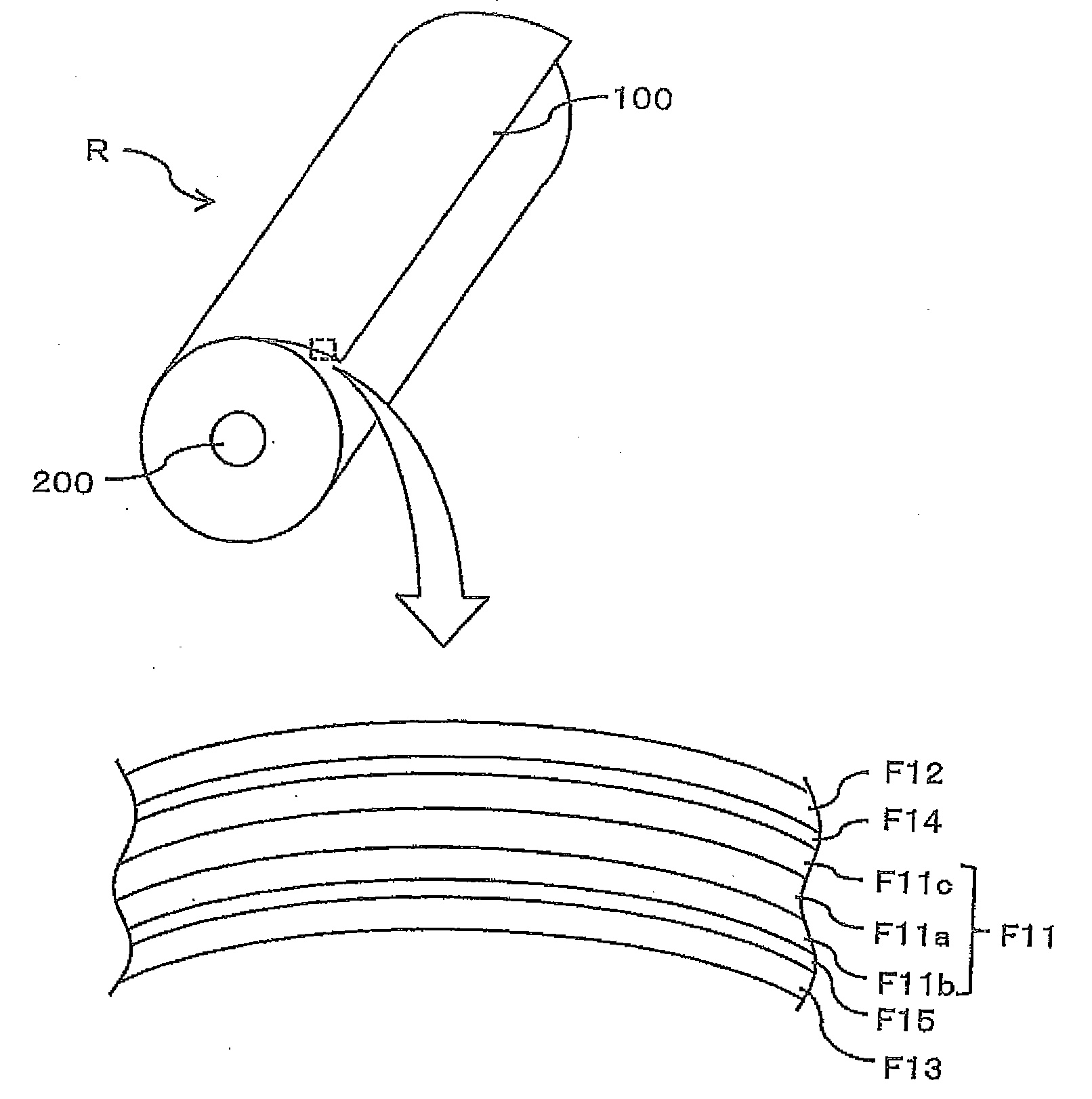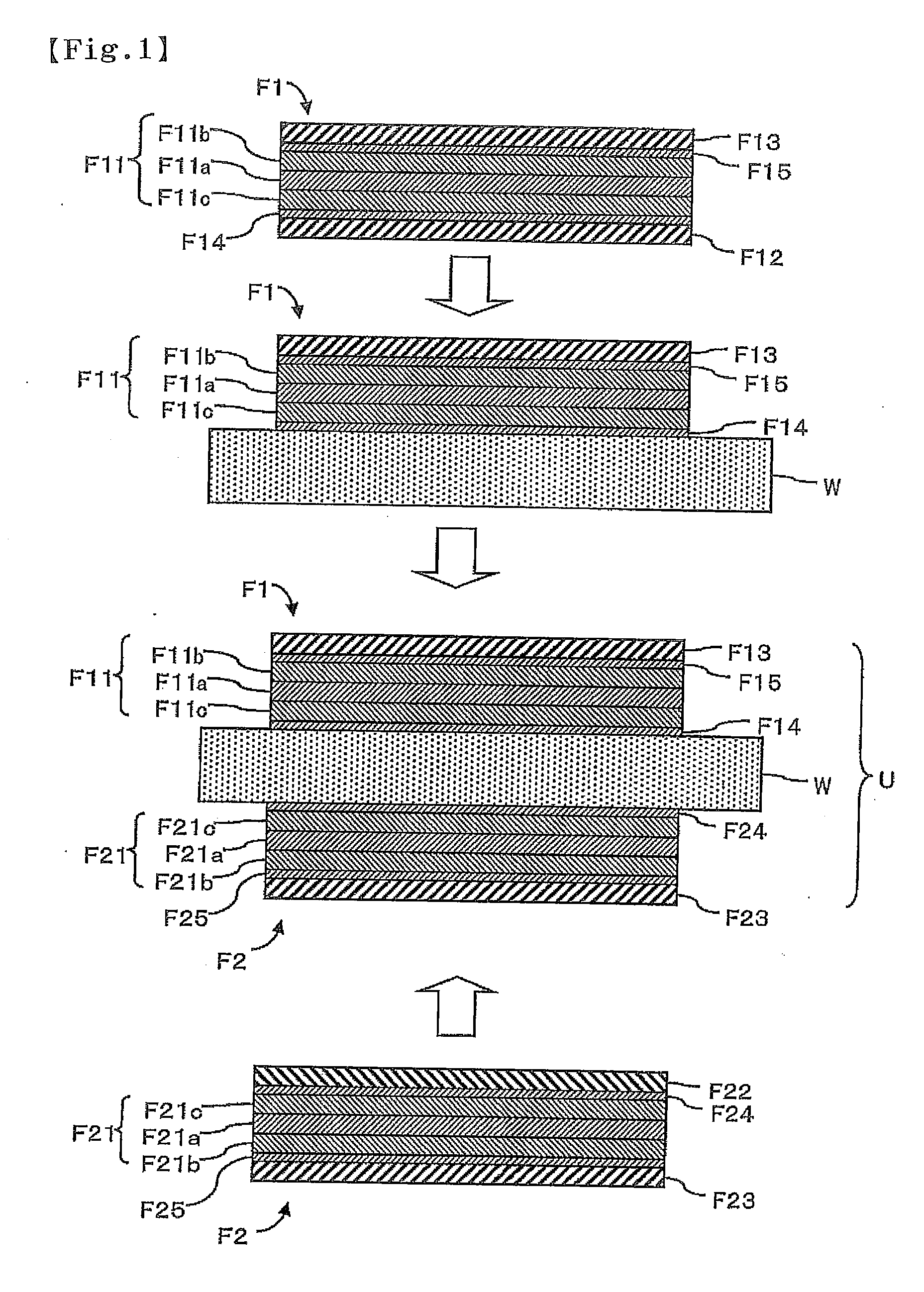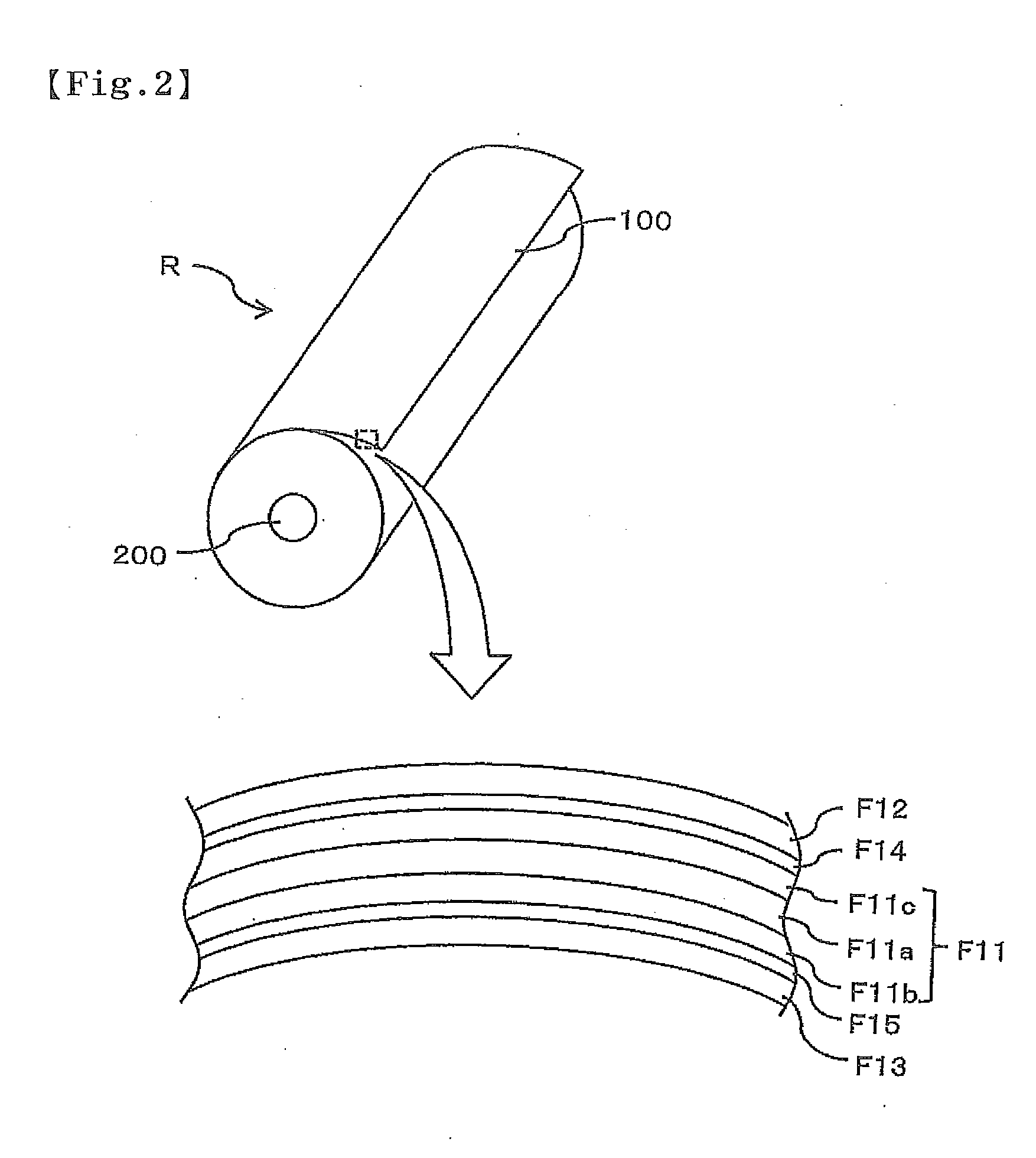Material roll and method for manufacturing material roll
a technology of material roll and roll, applied in the field of material roll, can solve the problems of cumbersome work, scratching or contamination of sheet material, and achieve the effect of improving durability
- Summary
- Abstract
- Description
- Claims
- Application Information
AI Technical Summary
Benefits of technology
Problems solved by technology
Method used
Image
Examples
example 1
[0045]In Example 1, a sheet material was used in which a release liner “MRF38” (manufactured by Mitsubishi Resin Co., Ltd.) was bonded as a first base film on a pressure-sensitive adhesive layer (first pressure-sensitive adhesive layer) of a polarizing film “SEG1423” (manufactured by Nitto Denko Corporation) having the pressure-sensitive adhesive layer attached thereto and serving as an optical film, and a surface protecting film “RP-300” (manufactured by Nitto Denko Corporation) was bonded as a second base film on a surface opposite to the pressure-sensitive adhesive layer.
[0046]The first base film is made of polyethylene terephthalate and has a thickness of 38 μm. The second base film is a film also formed of polyethylene terephthalate in the same manner as the first base film and having a thickness of 38 μm and, on the bonding surface for bonding to the optical film, a pressure-sensitive adhesive layer (second pressure-sensitive adhesive layer) made of acrylic-based pressure-sens...
PUM
| Property | Measurement | Unit |
|---|---|---|
| thickness | aaaaa | aaaaa |
| thickness | aaaaa | aaaaa |
| humidity | aaaaa | aaaaa |
Abstract
Description
Claims
Application Information
 Login to View More
Login to View More - R&D
- Intellectual Property
- Life Sciences
- Materials
- Tech Scout
- Unparalleled Data Quality
- Higher Quality Content
- 60% Fewer Hallucinations
Browse by: Latest US Patents, China's latest patents, Technical Efficacy Thesaurus, Application Domain, Technology Topic, Popular Technical Reports.
© 2025 PatSnap. All rights reserved.Legal|Privacy policy|Modern Slavery Act Transparency Statement|Sitemap|About US| Contact US: help@patsnap.com



